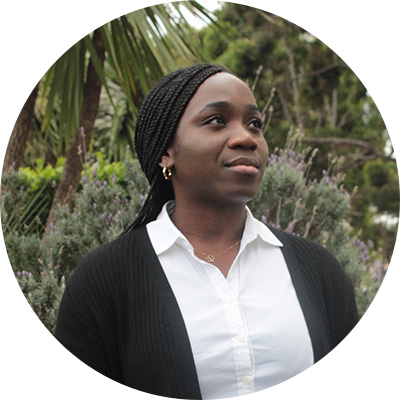Top-up Scholarships are a vital part of SVI’s student support and recruitment effort. They relieve financial pressure, enabling students to spend more time developing their research skills and doing experiments instead of taking a second job outside the Institute. They are a point of pride for recipients, helping us recruit high-quality students to SVI.
With a gift of $19,250 over 3 years, you will ensure SVI can provide financial support to Australia’s top PhD students.
If you are interested in supporting our Top-up Scholarships program, contact SVI Foundation: [email protected] or (03) 9231 2480.

October 2024
Dinner serves an ace
Over the years, the Support Group’s fundraising efforts have supported more than 120 scholars researching some of Australia’s most challenging diseases, including multiple myeloma, pulmonary fibrosis, and Fanconi anaemia.
Support Group Morning Tea 2024
 The Foundation Team recently hosted a special morning tea for our Support Group Committee, joined by members of the broader SVI community. This gathering was a special thank you to our SVI Support Group and PhD Top Up Scholarship donors, recognising them as valued members of our SVI community.
The Foundation Team recently hosted a special morning tea for our Support Group Committee, joined by members of the broader SVI community. This gathering was a special thank you to our SVI Support Group and PhD Top Up Scholarship donors, recognising them as valued members of our SVI community.
During the event, we had the opportunity to highlight the progress made by our PhD students since their commencement at SVI, providing them with a platform to express their gratitude to their supporters. Kezia Gitareja, Lara Abbouche, and Natalie Koh shared inspiring updates on their research journeys.
Lara Abbouche – Characterising the role of FANCM in DNA damage repair 
FANCM is a protein that helps fix damaged DNA by moving along the DNA and using energy from ATP. It works as part of a team of proteins in a process called the Fanconi Anemia (FA)-BRCA pathway, where it helps add a small protein called ubiquitin to another pair of proteins, FANCD2 and FANCI, when DNA is damaged. This addition of ubiquitin is crucial for signaling that the DNA needs repair.
Even though FANCM is important for this process, we don’t fully understand how it helps add ubiquitin to FANCD2 and FANCI. This project will look into how FANCM directs this process to ensure DNA repair happens correctly. Figuring out how FANCM works is important for developing new chemotherapy drugs that target this protein.
Kezia Gitareja – Investigating novel therapeutic strategies for multiple myeloma 
Multiple myeloma (MM) is the second most common type of blood cancer. One big problem with the current treatment, which uses drugs called proteasome inhibitors (PIs), is that the cancer often becomes resistant to them over time. We think that combining PIs with other treatments that target the ribosome (a part of the cell involved in making proteins) might make the therapy more effective. Specifically, we’re looking at how well the drug CX-5461, which targets ribosome production, works with the PI Bortezomib in a mouse model of MM. We’ll also study how MM cells become resistant to Bortezomib, CX-5461, and the combination of both treatments.
Natalie Koh – Defining the STAT3-VEGFA pathway to connect marrow and cortical bone vasculature.
bone vasculature.
The skeletal system has three main jobs: giving structure, managing metabolism, and producing blood cells. These tasks involve interactions between different types of cells. Specifically, stromal cells turn into bone-forming cells called osteoblasts and communicate with the network of osteocytes (mature bone cells) and blood vessels.
I think that these cell types help manage the size of blood channels in the bone. They help close these channels when new bone forms and open them up again as we age. In studies with mice, we’ve seen that too much of a protein called VEGF (vascular endothelial growth factor A) or excessive activity of a signaling pathway called STAT3 in bone cells leads to increased bone porosity and weakened bones.
My lab has found that high STAT3 activity raises the levels of VEGFA in the bone. This suggests that VEGFA might be involved in the bone changes seen when another protein, SOCS3, is missing. My project aims to understand this VEGFA-SOCS3 signaling pathway better, which will help explain how blood vessel growth affects the expansion and closing of these bone channels, linking the inner, spongy part of the bone with the hard outer layer.
Diversity in the DNA
 Bioinformatician and PhD student Neke Ibeh’s PhD project focuses on the huge genetic diversity within the world’s fourth largest population: Indonesia.
Bioinformatician and PhD student Neke Ibeh’s PhD project focuses on the huge genetic diversity within the world’s fourth largest population: Indonesia.
Neke’s deep computer analysis of genomic data from Indonesian blood samples is helping to identify markers for disease risk, as well as normal healthy variation in genetics among the Indonesian population.
“We are on the cusp of massive advances, particularly in being able to personalise medicine based on factors like individual genetics. But for everyone to benefit, we need to have equal knowledge and references for people of all ethnicities and backgrounds,” says Neke.
“I feel so fortunate to benefit from the scholarship support.”